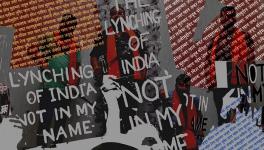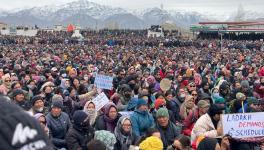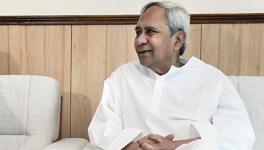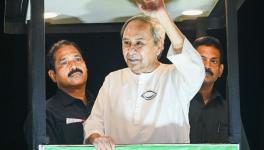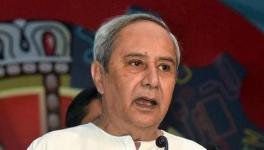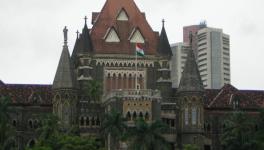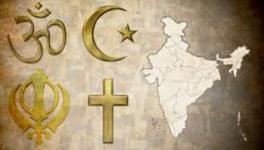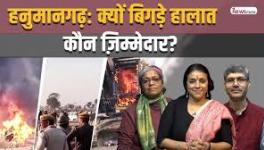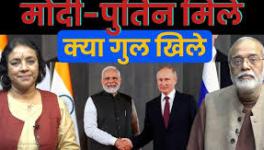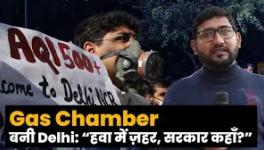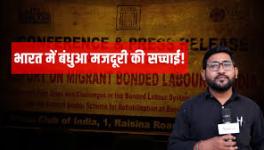This Constitution does not Permit War
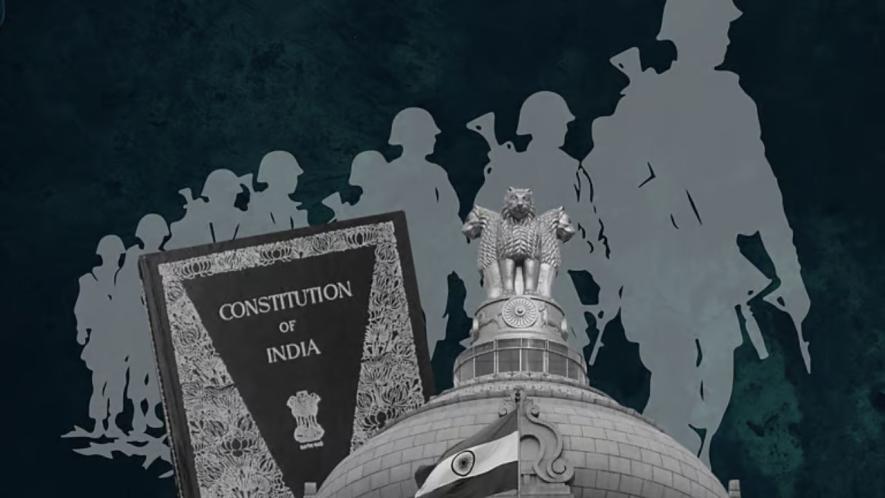
On january 26, 1950, the term “constitution of india” replaced the King-Emperor and his successors on all oaths in India. The supreme authority, to which all Indians pledge their allegiance to is this reverential legal document, the Constitution. It is now settled jurisprudence that the three branches - the Parliament, the President and the judiciary do not act under the authority of a political entity. They are all creatures of the Constitution and derive their authority from that document. The ultimate authority, therefore, in India is the Constitution.
Which is perhaps why in these perilous times, it may be wise to revisit how we, in India, view the concept of a “prerogative power”. Historically the prerogative powers were and still are powers of the British monarch which can be exercised without reference to Parliament, as these are, self-explanatorily, the prerogatives of the monarch. In practice these powers are exercised by a cabinet. In India, the idea that the President of India has the same powers as the British monarch is one that is in vogue as it is an easy way to explain our parliamentary system of government. But there is a critical distinction. While the British monarch “retains” prerogative powers i.e. powers not surrendered to Parliament, the Indian President is conferred explicitly with powers. Rather than a situation of unlimited power constrained by a Constitution, the Indian Constitution is rather explicit in what the President can and cannot do.
The limits of executive power
This is evidenced by the co-terminus nature of the executive power of the Union with the legislative power of Parliament as provided for in Article 73(1)(a). Article 73(1)(b) explicitly speaks of international agreements which is an explicit reference to a prerogative power. No other prerogative power finds reference here. Article 245 explicitly says that Parliament has the power to “make laws”. We further know that the executive power does not extend to law making because of the exception provided for the promulgation of ordinances. These must be ratified by the legislature. This shows that as far as the division is concerned, Parliament is the exclusive authority to make law. But Parliament also has a power over the executive that is again spelt out. It is the power of the “purse”. Under Article 265 no tax or levy can be raised without the authority of “law”. The executive cannot function without funds. Parliament expressly controls how much funding the executive branch gets and can also expressly control what to do with it.
Rather than a situation of unlimited power constrained by a Constitution, the Indian Constitution is rather explicit in what the President can and cannot do.
This, however, results in a confusion: where do the lines stop blurring? If the executive has, in principle, the same powers as Parliament, but only the Parliament can make laws, what can the executive really do?
This was answered in the leading administrative law case on the concept of delegated legislation In Re Delhi Laws Act (1951). The idea being, can the Parliament, by law, delegate power to the executive? The Supreme Court answered this and said it could be done only as an ancillary function. The legislature cannot completely abdicate its role to the executive. The essential function of policy would always vest with the executive. This was a seven-judge Constitution Bench of the Supreme Court. It also held that unlike the British Parliament, the Indian Parliament was a creature of the Constitution and therefore was subject to some inherent restraints. This idea of all authority flowing from the Constitution has been reiterate many times by the Supreme Court and is a key element of the premise of the 'basic structure' doctrine outlined in Kesavananda Bharati v State of Kerala (1973). Parliament is a creature of the Constitution so it is inherently constrained by it. The same follows for the Executive.
Our Constitution does not list out prerogative powers. It only lists some powers that are uniquely with the executive. These are ‘International Relations’ and the ‘Prerogative of Mercy’. Even the prerogative to summon parliament is limited by the fact that the Constitution requires that Parliament meet at intervals. Interestingly, the Indian Constitution makes no provision for the prerogative to declare war. In fact, the word ‘war’ appears only in contexts where it is treated as a condition that has arisen, not as an act the State may initiate. This is profoundly telling. War is not an instrument of policy in our constitutional design. It is a contingency, a crisis, something that befalls us rather than something we choose.
Compare this with systems like the U.S., where Congress is explicitly empowered to declare war, or the British constitutional tradition where the royal prerogative historically allowed the monarch to wage war. In India, the absence of any such affirmative power suggests a deliberate constitutional restraint. The State may respond to war, prepare for it, legislate for its consequences, but it is not constitutionally empowered to initiate it as a matter of sovereign will. Even Article 352, the Emergency provision, activates only upon the existence of war, external aggression, or armed rebellion, not upon their declaration. It is a subtle but crucial distinction. We are constitutionally a defensive State not just in spirit, but in structure.
This is perhaps because India’s Constitution was written at the time of the adoption of the U.N. Charter which, in Article 2(4), made the “use of force” illegal in settling international disputes. All those who signed up to that charter agreed to renounce war as a means of furthering policy. Under the U.N. system, armed force may only be used in “self-defence” or when authorized by the Security Council under Chapter VII of the Charter. India’s Constitution reflects this position. There is no prerogative of “War”. There is also Article 51 in the Directive Principles which requires that India prosecute a policy of friendly international relations and peace. War finds further mention in Schedule VII, under which are the lists that govern the limits of legislative and executive power.
While exercising this power, it is not only that the President passes a proclamation. The Constitution requires that Parliament be summoned and asked to express its explicit views on the policy.
Entry 1 of List 1 mentions war and states:
“Defence of India and every part thereof including preparation for defence and all such acts as may be conducive in times of war to its prosecution and after its termination to effective demobilisation.” (emphasis supplied)
A careful reading of this section shows “Defence of India” being the key term. The entry allows for powers to be exercised “in times of war”. It does not include the “declaration of war”. The phrase "its prosecution" refers to defence. Hence, “prosecution of war” here is in furtherance of defence, not a carte blanche for any kind of war. Even post-war powers are tied to demobilisation, not conquest or occupation. The whole entry is structured to limit power to defence-related activities.
Article 352 does not just prescribe a power. It lays down a procedure. When there is an emergency because of “external aggression”, the President can make a proclamation. This proclamation needs to be supported by the Council of Ministers. It also requires that Parliament ratify the resolution within a month. Unlike other provisions which refer to Parliament being in session or not being in session, this one is quite clear, Parliament must approve it. It also says that when the Lok Sabha is dissolved and this happens, you need a resolution approved by the Rajya Sabha (the Rajya Sabha never dissolves) within a month and the Lok Sabha needs to approve it within a month of its reconstitution. The Constitution is clear on this. While exercising this power, it is not only that the President passes a proclamation. The Constitution requires that Parliament be summoned and asked to express its explicit views on the policy.
Therefore, there are three conclusions that can be clearly drawn from the above. The Constitution of India, by its very design:
-
Restrains India from prosecuting “offensive war”. These would mean wars of conquest and those of a punitive nature and limits the use of armed force to self-defence.
-
Requires that the Entries in the Schedule VII be read in a manner that no constitutional body’s essential function is abdicated. (This is supported by In Re Delhi Laws Act)
-
Prescribes an explicit procedure as to how external aggression is to be handled.
Defensive military actions and the Constitution
Despite fighting five wars since her independence, India has not once declared war on any nation or entity. All conflicts have been an exercise in the powers of “self-defence”. This shows that Indian political bodies and entities have toed the constitutional line. While it may be imaginative to think of a Grand Army that goes and conquers all South Asia (Akhand Bharat), the Constitution does not permit its manifestation.
However, this limitation does not necessarily rule out taking military action in retaliation. As discussed below, this is allowed but subject to some constraints. This is because retaliatory action can be justified in cases where there is a need to create a deterrence to further aggression.
If one reads the procedure prescribed in Article 352 along with Entry 1 List 1 and remembers the law laid down in In Re Delhi Laws Act, one can conclude that the executive power under Entry 1 List 1 is limited to taking imminent responsive measures when there is an attack till the Parliament can express its will as to what the response shall be. For example, the executive has full power to stop an active external threat or attack and take all measures necessary to do so. But if the executive wishes to implement a policy on how to deal with this threat, it must refer to Parliament. Therefore, it can be argued that while the executive may take all security measures to prevent terrorist attacks in Kashmir, any form of “retaliatory” strikes will require the approval of the Parliament. Deterrence is a policy matter, and the Constitution is explicit. It has left the question of policy to the legislature and not the executive. There are no more prerogative powers, only constitutional power.
Civilian and parliamentary supremacy
This is also reinforced by the dual role of the President of India. The President is not only the executive head of the Union, but she is also the Commander-in-Chief of the Armed Forces. It may be noted that the fusion of this role is something introduced by the Constitution. The office of Commander-in-Chief India was one that was a pure military rank. In pre-independence India, the Governor General was not always the Commander-in-Chief. This fusion by the Constitution asserts civilian control over the Armed Forces in India. In India civilians decide the objectives of the Armed Forces. The Armed Forces do not, on their own, decide what action must be taken. This decision is a civilian decision. The Armed Forces, like every other professional branch of the government perform their role of advising and executing directives. But the core directive is civilian. The idea of giving the Armed Forces a “Free Hand” is not sustainable constitutionally. The decision must be made by the civilian branches, and the Armed Forces are fully empowered as any other professional agency of the Government to execute those decisions in any manner they deem fit.
The replacement of the prerogative to declare war, is Article 352. If we need to take a policy decision to stop external aggression, the President is required to follow the Article 352 procedure. The Article 352 procedure is a form by which the Parliament, expressing the will of the electorate, ratifies and supports the executive action. In every war we have had since the Constitution, Article 352 has been invoked. In 1962 it was involved during the Sino-Indian war. This proclamation was invoked the 1965 war as well. The 1971 war had a proclamation. Kargil was not a full-blown war because we treated it as a conflict within Indian territory due to Pakistani activity on our side of the Line of Control. It may not have qualified as “external aggression” in law as Pakistan never openly declared that it was fighting the conflict. It functioned through proxies. But still, during the whole operation, the then Prime Minister Atal Behari Vajpayee and the Defence Minister George Fernandes regularly briefed the Parliament. The idea that this was a pure executive decision was even anathema to our constitutional conventions.
The policy role of the Parliament
It is important to note here that the Lok Sabha Rules provide for a “secret sitting” where the Lok Sabha hears confidential information. Members of the House have the right to ask the government questions on any matter. This can be done at the request of the Leader of the House. In the China war of 1962, the opposition suggested that Jawaharlal Nehru hold a secret sitting. Nehru declined and opted for public transparency in decision making.
While the Pakistan Government has announced that it no longer intends to honour the Shimla Agreement, which established the line of control, India has made no such announcement, nor has it responded to this. On the ground, India still respects the Line of Control as is evidenced by the continuation of talks at the DGMO level.
Any military action that constitutes the creation of a policy of national self defence against external aggression would require that the President follow the Article 352 procedure. In short, going across the line of control, in the absence of an active incursion from the other side, would require parliamentary approval. The key being “active”. If the measure is needed to directly stop an incursion, the President may respond till the Parliament expresses its will. If, however, we make an advance and try to alter the position, by aiming to liberate Pakistan-occupied-Kashmir, or redraw a ceasefire line, we still consider ourselves bound by the treaty to honour. we need the Parliament to give its sign off. If we want to take a planned pre-emptive strike, our Constitution demands that the people be heard via their representatives in Parliament.
The talk of aggressive war or using the Forces to take revenge on Pakistan cannot hold water in a country where the Constitution is supreme.
Operation Sindoor
Early this morning the Indian Armed Forces launched and conducted “Operation Sindoor”. Operational details are yet to be announced but the press conference by the Foreign Secretary, the Air Force and the Army this morning has informed us that focused strikes were carried out on nine terrorist infrastructure sites in Pakistan and Pakistan-occupied-Jammu and Kashmir. However, this needs to be understood in the context of the fact that there has been sporadic firing and violation of the ceasefire line by Pakistan since the Pahalgam attack. This operation can be arguably classified as either a response to ongoing aggression or it could signal that we have taken a new strategic line on the matter. Either way, the Pahalgam attack happened on April 22 and it has now been more than ten days.
The failure to take the Parliament into confidence is not constitutionally tenable. The Constitution requires that the Parliament be involved. The executive is not permitted under our constitutional scheme to act unilaterally when it comes to these matters as these matters require parliamentary oversight. This is not just because the Parliament has been vested with the power to determine policy. The Parliament has also been vested with the power of the purse. It is the Parliament that authorises the taxes and the financial outlays that are used to fund these operations. There are mechanisms for the Parliament to function in secrecy and there is also a Standing Committee on Defence. This committee is a joint committee by both Houses whose sole role is to exercise defence oversight. It is still possible to remedy this by taking the house into confidence. It was surprising today that the media was briefed before Members of Parliament. The convention that the Raksha Mantri brief the house on military operations is a well-established one. It ought not to be ignored.
If we are taking a policy decision to fight external aggression, our Constitution demands that the people be heard via their representatives in Parliament. That is why the President is the third chamber of Parliament and is at the same time the Commander-in-Chief of the Armed Forces. This is the check and balance. There are national civil defence readiness drills that will happen in a few hours from writing this piece. The whole country is wondering what may happen. Ordinary people like me are going to have their lives disrupted. It is vital that our consent be taken on record, and our Constitution demands this very consent be given by Parliament.
Further, the Constitution demands that military action needs to be directly proportionate and have a real and rational nexus with “self-defence” against “external aggression”. Unrestrained retaliation constitutes offensive war which the Constitution prohibits, a policy we have honoured since we got our Constitution. We are restrained from taking military action out of vengeance and revenge. We can only take it if we need to take it to secure national defence. We must establish that this action will have a direct deterrent effect against the enemy who has attacked us. To that extent, this morning’s operations seem to be in line with our stated policy. India has taken no aggressive action. It has merely conducted policing operations to take out terrorists. India has an international obligation to peruse terrorists and the Shimla Agreement which we still honour requires that both states take steps to prevent cross border terrorism.
This limits the options the government has. The talk of aggressive war or using the Forces to take revenge on Pakistan cannot hold water in a country where the Constitution is supreme. The Forces pledge allegiance to the Constitution just like every other officer. They are required to follow all orders, but these orders are required to be “lawful”. We are a self-defence State. Any action that would turn us into something that is otherwise violates the very foundation of the Constitution. It is also perhaps why the world considers us a responsible nuclear power. We are restrained by our Constitution from first use. Except for the lack of Parliamentary oversight, this morning's operation was in full compliance with our constitutional limits on aggressive military action and international law.
India must carefully consider whether what is to be done now in response to the Kashmir terror attack is permissible within the constitutional framework. If we defend India, we defend the Constitution. For it is our Constitution that is sovereign in this country, not our people and certainly not any political leader.
Ajay Kumar is an advocate practising before the Karnataka High Court. The views expressed herein are purely personal.
Courtesy: The Leaflet
Get the latest reports & analysis with people's perspective on Protests, movements & deep analytical videos, discussions of the current affairs in your Telegram app. Subscribe to NewsClick's Telegram channel & get Real-Time updates on stories, as they get published on our website.









